Factories should go for the Solar Net Metering but there are pitfalls
Discoms in almost all the states provide the Net Metering facility by which the consumers can store the excess energy generated from the roof top solar plant with the Discom Grid and can use it in later hours.
During the Sun hours, when the load (in KW) of the factory or the commercial building is less than the roof top solar generation for any 15-minute block interval, the excess solar energy goes back to the Grid. During evening hours when the load is more and there is hardly any solar generation, then the stored solar energy is used back by the consumer from the Grid.
The accounting of the roof top solar energy is done on a monthly basis.
- At the end of each month, the solar energy is set off against the energy consumed by the factory or the Plant through a bi-directional meter installed by the Discom at the Consumer premises.
- If there is any excess solar energy which is not used during the month, it is taken forward to the next month in which the consumer can use the same.
- However, if there is unused solar energy left in March (end of Financial Year), then it will lapse as per the policy in Haryana while it will be paid at Rs 2.0 /kWh in Uttar Pradesh. Similar policies exist in other states also including Delhi, Rajasthan and Punjab.
The table below shows the energy accounting and settlement for 1 month (April) under Net Metering for a 100 KW solar system in a typical factory set up with a contract demand of 100 KW.
| Day | Energy Consumed(kWh) | Solar Generation)(kWh) | Banked Energy |
| 1 | 614 | 479 | – |
| 2 | 15 | 478 | 463 |
| 3 | 478 | 491 | 13 |
| 4 | 645 | 444 | – |
| 5 | 633 | 450 | – |
| 6 | 701 | 441 | – |
| 7 | 612 | 520 | – |
| 8 | 426 | 523 | 97 |
| 9 | 12 | 541 | 529 |
| 10 | 459 | 497 | 38 |
| 11 | 723 | 478 | – |
| 12 | 578 | 483 | – |
| 13 | 623 | 429 | – |
| 14 | 701 | 501 | – |
| 15 | 641 | 504 | – |
| 16 | 12 | 502 | 490 |
| 17 | 423 | 476 | 53 |
| 18 | 530 | 472 | – |
| 19 | 481 | 451 | – |
| 20 | 392 | 439 | 47 |
| 21 | 543 | 472 | – |
| 22 | 605 | 462 | – |
| 23 | 12 | 495 | 483 |
| 24 | 452 | 523 | 71 |
| 25 | 545 | 547 | 2 |
| 26 | 393 | 482 | 89 |
| 27 | 479 | 477 | – |
| 28 | 625 | 461 | – |
| 29 | 521 | 441 | – |
| 30 | 12 | 478 | 466 |
| April | 13,886 | 14,437 | 551 |
For certain days in April month, the energy is getting banked or stored with the Discom. At the end of month, solar has generated excess of 551 kWh or units which will be taken forward to the month of May.
Table below shows monthly settlements for the full year of solar energy.
| Month | Energy Consumed(kWh) – (1) | Solar Generation)(kWh) – (2) | (2)-(1) (kWh) | (Cumulative Energy banked (kWh) |
| Apr | 13,886 | 14,437 | 551 | 551 |
| May | 15,672 | 15,432 | (240) | 311 |
| Jun | 14,521 | 13,441 | (1,080) | – |
| July | 12,673 | 11,699 | (974) | – |
| Aug | 11,128 | 10,952 | (176) | – |
| Sep | 11,893 | 11,699 | (194) | – |
| Oct | 12,321 | 11,450 | (871) | – |
| Nov | 11,009 | 9,210 | (1,799) | – |
| Dec | 10,121 | 8,463 | (1,658) | – |
| Jan | 10,344 | 8,712 | (1,632) | – |
| Feb | 11,236 | 11,201 | (35) | – |
| Mar | 11,037 | 13,690 | 2,653 | 2,653 |
So, there is excess solar generation in the months of April and March. However, the excess generation of April month is utilized in future months during the settlement year. But the excess solar generation in month of March will lapse in spite of Net Metering facility.
Especially for seasonal industries that has lean period during winter months, the coincidence of the settlement year with the financial year is a problem. For example, the potato cold storages (aloo godowns) has this typical problem as they hit a off season from October to February when their load dips significantly.
Suggested Articles
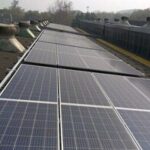
What should be installed as part of Rooftop Solar System at Factories?
A rooftop solar system for factories typically includes solar panels, inverters, mounting structures, wiring, and monitoring systems. Additional components like net meters and energy storage may also be installed to optimize energy usage and track performance
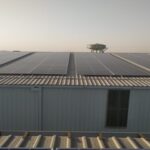
Demistyfying Battery Back up
In off grid systems the main issue experienced is regarding…
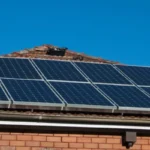
How Does Temperature Affect Solar Panel Efficiency?
The stronger the sun, the higher the temperature and more energy your solar panels produce, right? No.

Types of structures for mounting of Solar Panels installed at house/ home or industry/commercial place
Normally structures are made of MS and then galvanized with…
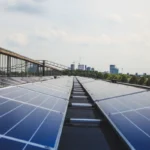
COP27: Harnessing Solar Energy for a Sustainable Future
COP27 is the latest in a long line of global climate conferences, which have been held regularly since 1994. The United Nations Framework Convention on Climate Change (UNFCCC) was created at the 1992 Rio Earth Summit.

India’s Renewable Energy Revolution: The Role of Agrivoltaics
Explore how agrivoltaics is driving India’s renewable energy revolution by combining solar power with agriculture for sustainable growth.
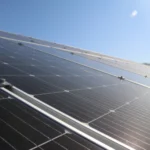
Everything You Need to Know About Solar PV Modules
Solar PV modules explained: how they generate electricity, their benefits, and why they’re key to renewable energy growth.

The Rise of Clean Energy: Solar Energy Trends in 2023
The solar energy industry is on the rise, as the demand for clean and renewable energy sources continues to increase. 2023 is shaping up to be a big year for the solar energy sector, as new technologies and innovations are expected to drive growth and expand the reach of solar energy.
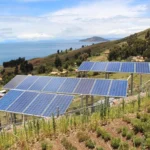
Save on Electricity in Haryana Using Net Metering: Complete Guide
Learn how to save on electricity in Haryana with net metering. Step-by-step guide on benefits, installation, and cost savings for your home or business

Everything You Need to Know About Solar System Earthing
Power factor after solar installation often fluctuates due to system design and load patterns. Learn the key causes, challenges, and solutions for better efficiency.